Winter Garden
I snagged this from the Winter Garden Forum. I've read it several times over the years since its posting. I thought I'd move it here in case some of us don't spend much time over on the Winter Forum...IMO, it's full of very useful thoughts.
Your aging and winter gardens
Posted by luseal (My Page) on Mon, Oct 28, 02 at 22:47
TO MAKE GARDENING EASIER AS YOU AGE, PLANT A GARDEN TO LOOK GOOD IN THE WINTER,
(Only read this essay if gardening is your passion and you want to continue gardening to the "bitter end.")
When I began serious gardening at the age of 23, I was as strong as a peasant woman. On week-ends I could garden for 10 to 12 hours with nary a sore muscle or aching joint. Before and after work on week days I would even put in an hour or two of hard work with no sore bones. But once I hit the age of 50, things began to creak, moan and pain me. At the age of 52 I got a bad case of vertigo which lasted two weeks. I was bedridden with this for one week, flat on my back. This is when it dawned on me, "Since I am not that super woman of age 23 how would I take care of my extensive garden if some physical problem really limits me in working in my garden?" I was especially thinking of this physical problem called "aging." I am now, way over 50, (older than Martha Stewart) and feel like 101,sometimes.
I do not want to be one of those older gardeners who whine and lament: "I cannot work in my garden any more. It is too much for me. I can't bend, dig, weed, trim or plant like I did years ago. I do not have the stamina and energy. I get too sore working in the garden. My garden looks a mess. I must remove most of the plants and go back to just grass. Annuals are too much work. Perennials need too much cutting back and separating. Are my gardening days over? And finally, should I sell my property and move."
Truthfully, all of the above statements are a reality for most older gardeners. Our bones do hurt us. Our bodies do slow down. We can not do what we did 30 years ago. So what are we to do? If gardening makes you happy and you do not wish to give it up, Plan for your older gardening days. How do you plan for your older gardening days? You do this by planning and planting a garden that looks beautiful in the Winter. These two can go hand in hand. This article is mainly written for gardeners in the Northeast U.S., zones 5-6-7-8.
Planting a garden to look beautiful in three seasons and also in the winter means you must plant flowering shrubs, conifers, evergreen trees and deciduous trees that look especially good in the winter. It might be their bark, shape or color. Your winter garden should invite you to want to be in it even though the weather is cold or snowy. You must have enough interest and structure in your garden that it beckons to you to want to sit, walk around, and even putter in it even though the garden is dormant. This is very possible and the way I planned my garden. Let me tell you about my philosophy of winter gardening which is also my philosophy of gardening now that I am much older than 23.
Evergreen structure is the most important aspect of a winter garden. Look at your own garden. When your annuals and perennials die down, do you have "nothing?" I inwardly cry when I view a totally annual or perennial garden. It is so short lived for the amount of work involved. Why couldn't they have also planted evergreen shrubs in this garden for structure in the winter? The number of wonderful miniature and small conifers is legion. They look wonderful for four seasons of the year and get better with age. Get a good garden book and look up conifer shrubs to get ideas or talk with a horticulturist and pick his/her brain for his favorite choices. Plant many of them in every bed. In the winter, this is what you will be enjoying.
Annual Flower Beds - Forget them. They demand too much work for 'me ol' bones'. Not only must you replant annuals each year but that bed becomes a nothing in the winter. Number one on my out list are annual beds. Do I plant annuals anymore? Truthfully? Yes, I do plant a few but not like I did years ago. I especially do not use them as borders because they disappear in winter and I do not use them much as fillers, for the same reason. If I do need an annual plant, I usually resort to the larger flowering New Guinea impatiens or similar plants. Easy in - easy out.
Perennial Flower Beds- I love it when gardeners say, " I only plant perennial flowers " 'cause they are no work". To develope a beautiful perennial flower bed can be labor intensive. My greatest frustration in gardening was my perennial beds which are no more. Do I plant perennials? Yes, but not a whole bed. Most of my perennials are planted with conifers and shrubs and they are the type that you do not cut flat in the winter , but rather are left for the snow to do its magic. Which perennials give you the most for your time invested? Lilies, daylilies, all spring bulbs daisys, rudbeckia, goats beard, peonies, tree peonies, vitex, hostas, hydrangeas, etc. You know what works best for you.
Cut down on hard jobs such dividing or removing overgrown plants- round up young, willing and able budding gardeners and encourage them to help themselves to your hostas or ostrich ferns or whatever plant is taking over your beds. I have even put a small sign in the front of my house - FREE -HOSTAS, FERNS,+FLOWERS. One morning a little boy came to my door with a big wagon and said "my mommy wants hostas, thank you." He returned home with a polite note from me stating that is was a "dig your own deal". She did return with him and they filled the wagon.
Weeding- You can minimize weeding by planting thickly and using the filler plant ,i.e. hostas. Buy the newer varieties of this wonderful plant. Get rid of the old common variegated ones. They are feasts for slugs.
Mulching - I do not mulch as much as I did years ago. Even though mulching cuts down on weeding, it is a lot of back breaking work. Decide for yourself how much you can do. If I am having a special party at my home I might bring in a dozen bags of mulch and place it in the beds I want to pretty up. If I am having a really big event, I hire some one to mulch my beds. Saves your ol' bones.
Around each bed I plant Korean boxwood (all my English boxwood died). There may be as many as 30 to 40 surrounding each bed. Do you know how beautiful boxwood make each bed in the winter when most gardens are bare? Boxwoods add structure and look great with snow on them. Actually my boxwood hedges look great in all the seasons as they neatly frame my overflowing flowering shrubs, conifers, and flowers.
Where boxwood hedges are too heavy or another effect is needed, I use Liriope as a hedge. Variegated and Green Liriope are my latest love. They are as tough as nails, slugs shun them, they grow fuller each year, their texture is fine and desirable, and they are evergreen most of the time. They even look good in the winter until a prolong freeze hits them. Liriope only need cutting down with a serrated knife in March or April. I have even gotten rid of my common hostas which I used to use as borders. In a good wet year as was the year 2000, the slugs feasted on the hostas and by the end of August everyone's hostas looked like Queen Ann's lace.
Around most beds I edge with bricks laid flat and even with the ground so the lawn mower wheel can easily mow over them. This brick framing makes it easier for me because I do not have to dig to edge my bed each Spring. In the winter I sweep the bricks and that neatens them and In the early summer I simply remove any stray overflowing grass. I have noticed that if the edging of your beds look tidy, your beds look cared for.
Verticle interest- Arbors of vines add height, vertical interest, and are fun to walk under. Do not remove the dry vines in the winter. The snow lands on them and they become a structure so different from what they looked like in the summer. An alluring snow tunnel. One of my long nine foot arbors is planted with two weeping evergreen atlas cedars. The weeping effect in winter is like icicles. Also in each bed plant a strong verticle structural plant. Something pyramidal. Usually in my beds it is a Hinoki, tall cypress, tall juniper, strong chubby yew, or Alberta spruce.
Air conditioning - I never wanted central air-conditioning because I was told that you will never want to work outside anymore. I found out this is not true. I garden more since my " Air " was installed. How so? I know that if I work outside in 90+ degrees and am really sweltering, I only have to drag myself inside, have an ice tea, sit down for awhile to cool off, and I am fit to go outside for another hour or more. There were very few hot summer days that I did not garden at all. On those days it was because the humidity was 90+, the gnats were bad, the mosquitoes were in full force, or it was pouring rain.
Flowering Shrubs - Use flowering shrubs such as evergreen and deciduous azaleas, enkianthus, crape myrtle, viburnums, rhodes, andromadas, vitex, and many butterfly bushes. Don't only plant azaleas in your front garden but fill your back garden with tons of them. It is a spectacular effect in the Spring and even in the Winter with snow on them. So what if they don't flower in the Summer or Fall. Neither do daylilies bloom in the Spring or winter.
Small trees - On the ends of some beds I have been planting a small deciduous tree that will give me dappled shade as I walk through the paths. I do not like to walk through a garden that is in full sun. These trees though, will not give me heavy shade. If they do begin to give me heavy shade, I raise their hems, thin out selective branches, or remove wide arms. I am a little concerned about my limber pine because each spring, even though I cut the new growth in half, the tree is getting too tall to do this without a tall ladder. I think I planted too large a tree in a garden bed.
Almost all the trees in my garden are flowering ones. What more can you ask for? Remember, these trees not only give you flowers and dapple shade in the summer and spring but also add interest in the fall and winter with snow upon their branches. Good choices are: weeping cherry, kwanzan cherry, styrax, franklinia, southern magnolias, soulangiana magnolia, crape myrtles, dogwoods, acer palmatum, acer grisium and all unusual maples, stewartia, sweet bay magnolia, fringe tree, golden raintree, sourwood, vitex trees, holly trees, and my favorite non-flowering trees; china fir, limber pine, umbrella pine, dragon's eye pine, and stately soaring dawn redwood.
I now do not clean out my beds and lawn in the Fall or Spring. I hire
Someone to do that. You can not do everything. A crew of five men
came this November, right before Thanksgiving. It was wonderful to see
these strong able guys rake and neaten all my beds and paths. They
reminded me of my ol' husband when he was 30-40 years old and strong as
they are now. They were finished in one day and it only cost me $400.00.How pleasant it was this winter to walk in my garden each day and see neaten beds instead of looking at all the work I would have cleaning up in the Spring. My husband loved it too.
The date today is November 10th,2001, in Eastern Pennsylvania and many of my large deciduous trees have already dropped their colorful leaves and all my flowers are gone. Even my sugar maples are bare. But, I still do have
14 acer palmatum dissectums in full leaf. - brilliant red, yellow and orange, three shagbark maples ( acer grisium), are brilliant red. My 10 oakleaf hydrangeas, 'Snow Queen' are glorious mottled shades with all the
leaves still on and all the large flowers still on. My enkiantus are brilliant red and all my azaleas have leaves that look great. Some are maroon and yellow in color. The foliage of the mentioned trees and plants seem to me to
keep their bright and colorful leaves the longest. There is nothing in this Fall garden that I must coddle or give much attention to. Everything returns.
I garden on 2 acres of land that used to be only grass with large trees around the perimeter. Over the past 30 years of gardening on this property, I have put in at least thirty beds of all shapes and sizes. I did not make these beds all at once. Each year I added one or two. Was my garden planned on paper and systematically implemented? No. Like Topsy," it just growed". In each bed I plant one acer palmatum, a group of pink or lavender azaleas, a vitex, a butterfly bush for height, a hinoki or unusual conifer shrub or two, and always a tall impressive pyramidal evergreen conifer for dramatic interest.
With my Fall garden all cleaned and gussied up, all winter long I can leisurely putter around, snip here and there and enjoy myself. And you must have large garden benches placed around your garden. I have five sturdy ones placed in far reaches of the garden. This is especially important in the winter when one may not really want to be outside and be uncomfortable.
Bundled up in winter coat, hat, gloves and with a hot cup of coffee in one hand and snippers in the other hand, the benches at the far ends of the garden are a nice destination where I can sit and enjoy my Winter Garden. This is different from what one often reads, "winter is the time to sit by your fireplace with garden catalogues in hand and "dream green". Each day that it is possible, I stroll and snip around the beds and sit on each of the benches and take in the view. My three cats also follow me and sit with me on the benches. Lulu Cat, usually snuggles in my furry coat lapels. This September I got a Maltese puppy, Cocoa-Mulch, who is now part of my entourage. Having a puppy this winter ensured that I would be outside five or six times a day. What is more fun than being in your garden with your cats and dogs? And husband? A husband to whom you can point out all the garden warts and things you want him to help you with come early spring.
Nothing do I love more than lying across my bed looking out of my upstairs window at the full green winter garden below. Even without a snow covering there are large spaces of lush green pachysandra carpeting the ground. My two red brick terraces and a brown stoned courtyard also make for pretty carpeting.
Nothing do I love more than sitting or walking in the early morning garden during or after a snow fall - Coat over bathrobe, rubber boots on, fortified with that hot mug of coffee and my "beasts".......Aah...... Do not garden for only three seasons of beauty. Also make an interesting WINTER GARDEN. Luseal

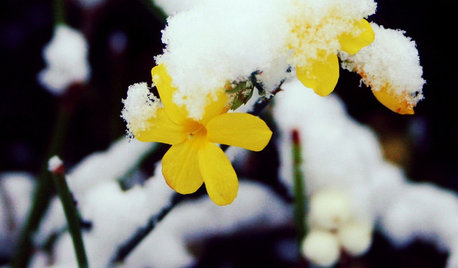
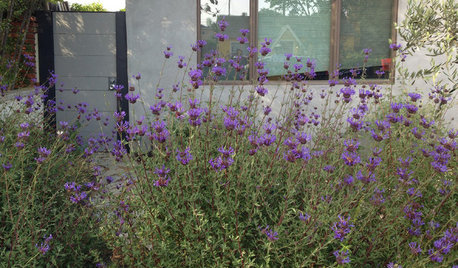
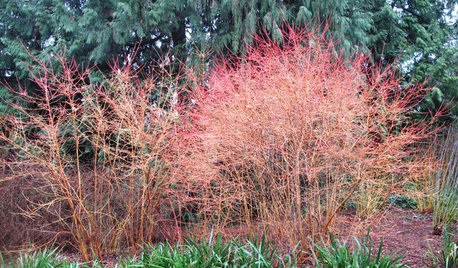
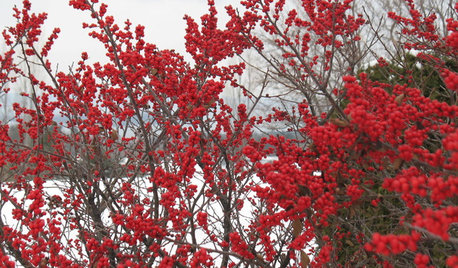
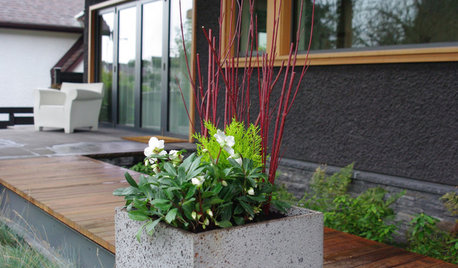
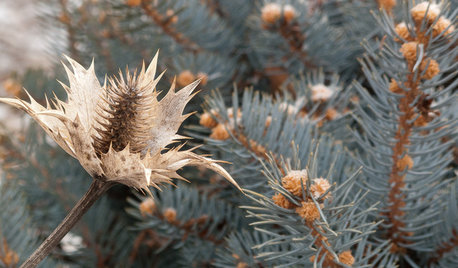
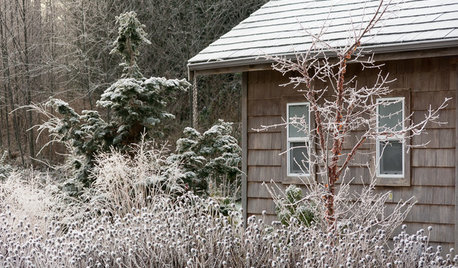
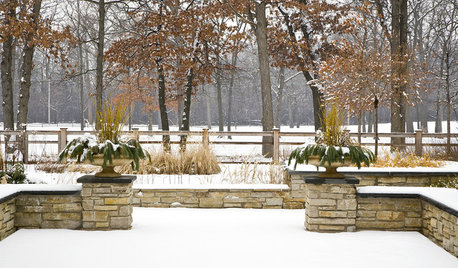
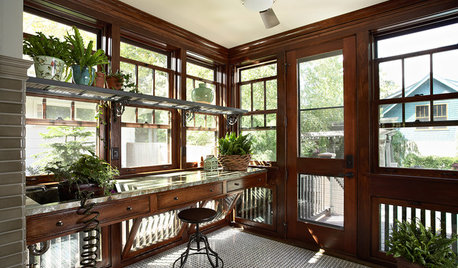







reball517
Related Professionals
New Bedford Landscape Architects & Landscape Designers · Cottonwood Landscape Architects & Landscape Designers · Lakewood Landscape Architects & Landscape Designers · Allentown Landscape Contractors · Davidson Landscape Contractors · Farmington Landscape Contractors · Galt Landscape Contractors · Mastic Beach Landscape Contractors · Pacifica Landscape Contractors · Riverhead Landscape Contractors · Riverview Landscape Contractors · Secaucus Landscape Contractors · Haddonfield Decks, Patios & Outdoor Enclosures · Mitchellville Decks, Patios & Outdoor Enclosures · Redlands Decks, Patios & Outdoor Enclosures